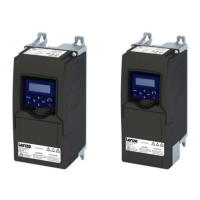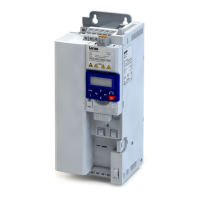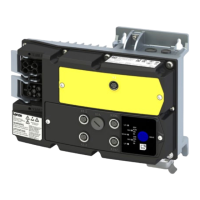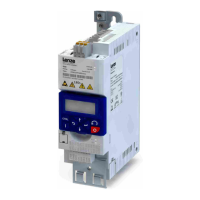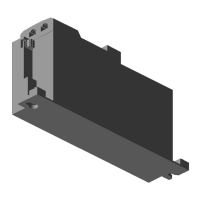11.5.2 Inverter motor brake
With this braking method, which can be selected in 0x2541:001 (P706.01), the regenerave
energy in the motor is converted as a result of dynamic acceleraon/deceleraon with down-
ramping of the ramp funcon generator.
NOTICE
Too frequent braking may cause thermal overload of the motor.
▶
Avoid acvang the "Inverter motor brake" funcon over a longer me!
▶
In applicaons with a high mass inera and long braking mes (> 2 s), use the "DC braking"
funcon.
Precondions
•
The "Inverter motor brake" braking method must not be used with vercal conveyors
(hoists) or with acve loads!
•
The "inverter motor brake" braking method only works in operang mode 0x6060
(P301.00) = "MS: Velocity mode [-2]".
•
When this braking method is used, the motor overload monitoring is not adapted. A too
frequent use of the inverter motor brake may cause an incorrect operaon of the motor
overload monitoring. 4Motor overload monitoring (i²*t) ^ 162
Details
During the deceleraon process, the ramp funcon generator is stopped. The frequency set in
0x2541:004 (P706.04) is added to the frequency setpoint, taking the sign of the current actual
frequency into consideraon. Furthermore the ramp funcon generator is stopped in a state
of overvoltage. If the DC-bus voltage falls below a dened DC-bus voltage potenal, the addi-
onal frequency connected is reduced again and the ramp funcon generator is re-acvated.
By the alternang acceleraon and deceleraon resulng from this circuit, the energy is con-
verted thermally in the motor. For process-related reasons, torque oscillaons may occur.
Seng instrucons
Generally, the smallest value possible required by the applicaon for being able to sll tra-
verse the load to be moved in a controlled fashion should be set as addional frequency.
Greater mass inera values require an increase in the rated motor frequency set. Increasing
the rated motor frequency, however, causes greater torque oscillaons. A possible conse-
quence is the reduced service life of mechanical components. Furthermore an increase in the
rated motor frequency also increases the energy converted into heat in the motor. A possible
consequence is the reduced service life of the motor.
Parameter Name / value range / [default seng] Info
0x2541:004
(P706.04)
Brake energy management: Addional frequency
(Brake management: Add.frequency)
0.0 ... [0.0] ... 10.0 Hz
Frequency deviaon which is connected to the deceleraon ramp in a
pulsave fashion when the "Inverter motor brake" braking method is
used.
0x2C01:005
(P320.05)
Motor parameters: Rated frequency
(Motor parameters: Rated frequency)
Device for 50-Hz mains: 1.0 ... [50.0] ... 1000.0 Hz
Device for 60-Hz mains: 1.0 ... [60.0] ... 1000.0 Hz
General motor data.
Carry out sengs as specied by motor nameplate data.
Note!
When you enter the motor nameplate data, take into account the phase
connecon implemented for the motor (star or delta connecon). Only
enter the data applying to the connecon type selected.
Addional funcons
Brake energy management
Inverter motor brake
276
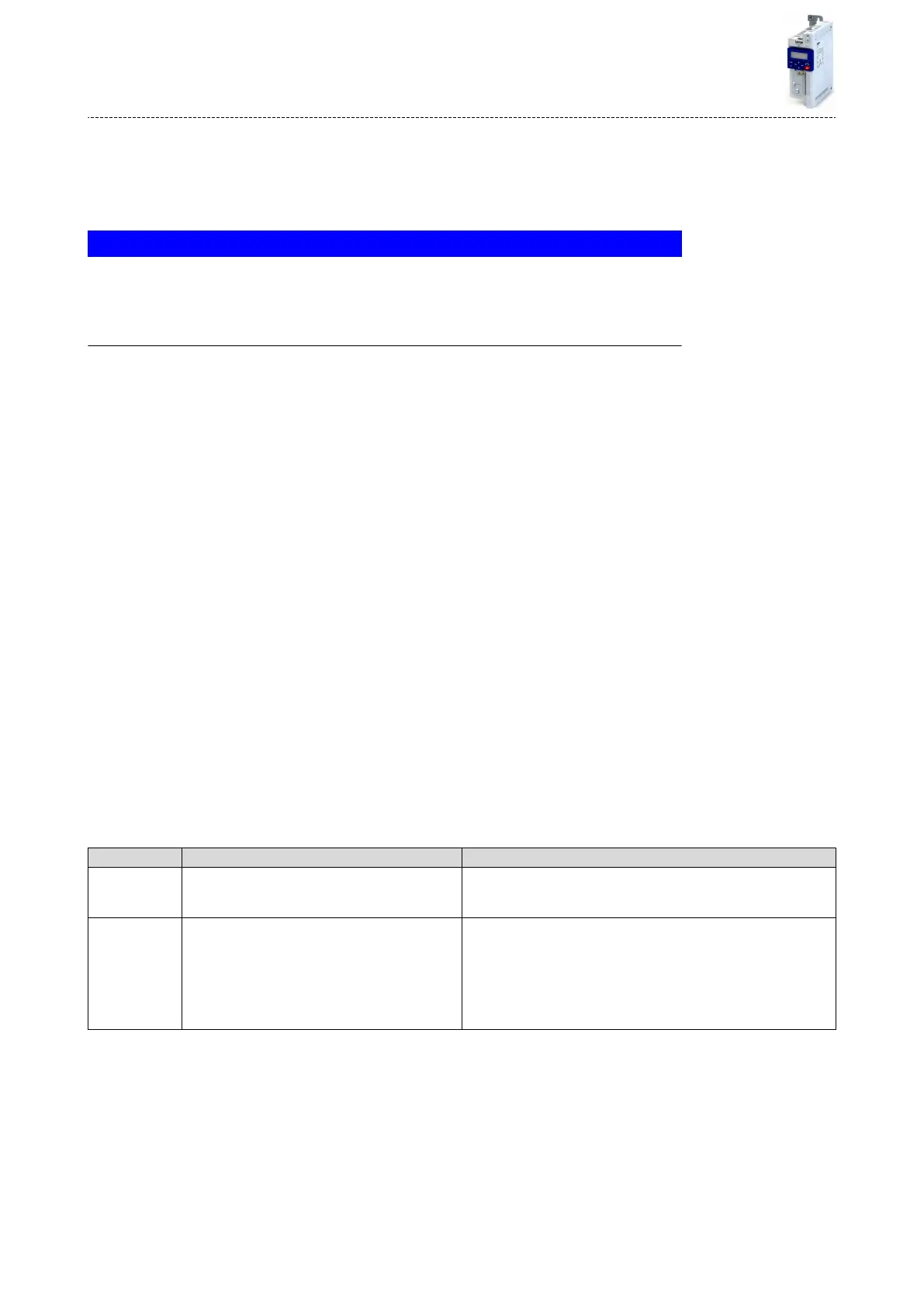